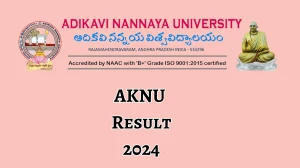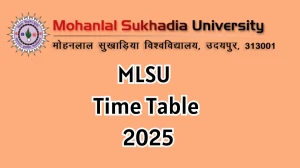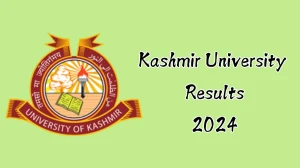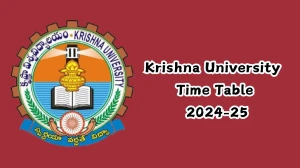- Rojgarlive »
- Education »
- CUET Sociology Question Paper 2024 exams.nta.ac.in Download PDF Here
CUET Sociology Question Paper 2024 exams.nta.ac.in Download PDF Here
by Sangeetha
Updated Apr 24, 2024
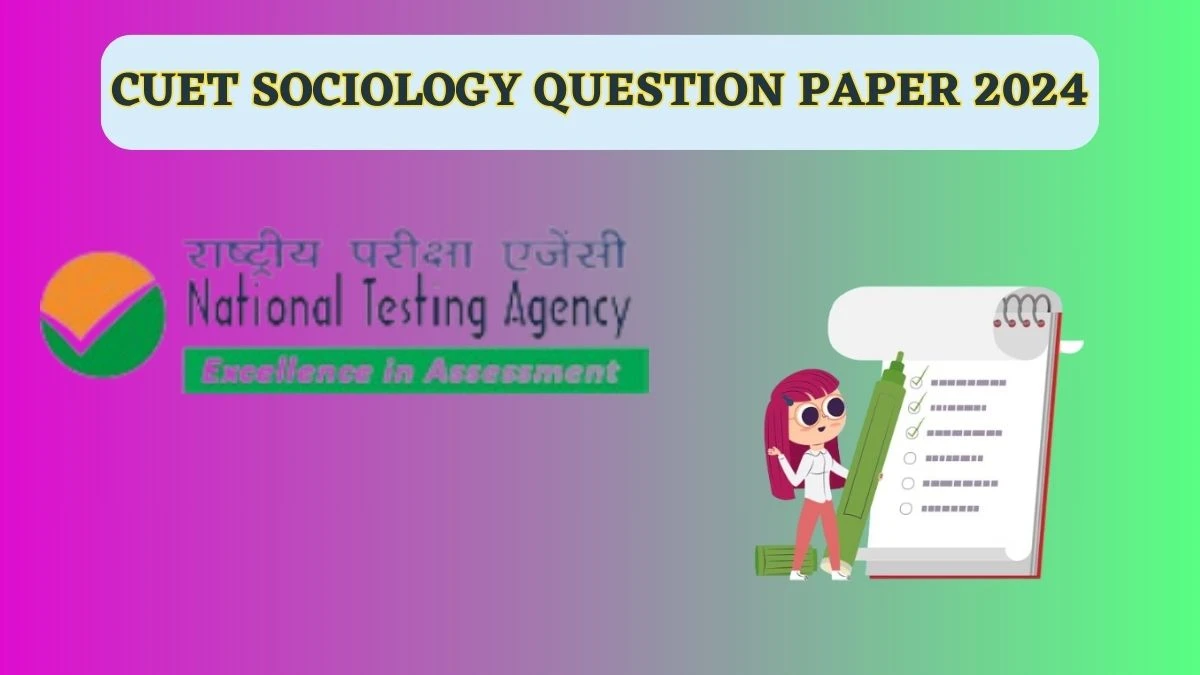
CUET Sociology Question Paper 2024 @ exams.nta.ac.in
CUET Sociology Question Paper 2024: Sociology explores the intricate dynamics of human society, delving into the interplay of social relationships and behaviors across various institutions.
Within the CUET UG exam, Sociology holds significance, with its syllabus covering areas such as Introducing Indian Society, Social Institutions, The Challenges of Unity in Diversity, and Social Change and the Economy, among others. Proficiency across these topics is essential for securing commendable marks in this section.
Check - CUET Sociology Question Paper 2024
CUET Sociology Question Paper - Questions with solutions
1. Life expectancy refers to:-
A) The estimated number of years that an average person is expected to survive
B) Total number of live births that a hypothetical woman would have if she lived through the reproductive age
C) Difference between birth rate and death rate
D) The number of live births per 1000 women in the child bearing age group
Correct Option - A
Solution - The word "life expectancy" refers to how many years an individual can anticipate living. Life expectancy is defined as an estimate of the average age at which members of a certain population group will die.
2. A situation where a large cohort of women of reproductive age will fuel population growth over the next generation, even if each woman has fewer children than previous generation did is called:
A) Fertility Rate
B) Total Fertility Rate
C) Population Momentum
D) Population Growth
Correct Option - C
Solution - Population momentum refers to the situation in which a large group of women of childbearing age drives population growth in the next generation, even if each woman has fewer children than previous generations.
3. The type of demography that enquires into the wider causes and consequences of social Structures and processes on population is called:
A) Social Demography
B) Formal Demography
C) Arithmetic Progression
D) Geometric Progression
Correct Option - A
Solution - Social demography is a type of demography that investigates the broader causes and effects of social structures and processes on the population. It investigates the relationship between social factors and population dynamics, including how education, income, occupation, and social norms affect population trends and patterns.
4. Famines and diseases are nature's way of dealing with the imbalance of food supply vis-a-vis increase in population. Malthus identified this as :
A) Preventive checks
B) Positive checks
C) Negative checks
D) Promotive checks
Correct Option - B
Solution - In 1798, Thomas Robert Malthus published a Treatise on the Principle of Population, which proposed this hypothesis. Malthus believed that balance could be achieved in the provision of food to the people through positive and preventative inspections. These controls led to the Malthusian disaster.
5. Sex ratio refers to the :
A) Number of females per 100 males in a given area at a specified time period.
B) Number of males per 1000 females in a given area at a specified time period.
C) Number of females per 1000 males in a given area at a specified time period.
D) Number of females per 1000 males in a given area at a non-specified time period.
Correct Option - C
Solution - Gender composition is expressed in a ratio called the sex ratio. Sex ratio is defined as “the number of women per 1,000 men in a population”. Therefore, a sex ratio of 1,000 indicates total balance between the sexes. A ratio above 1,000 indicates there are more women than men, while a ratio below 1,000 indicates there are fewer women.
6. Match List I with List II
List I List II
A. Jatavas I. Muslim Community
B. Multani Lohars II. Meghalaya
C. Khasis III. Karnataka
D. Vokkaligas IV. Uttar Pradesh
Choose the correct answer from the options given below:
A) A-IV, B-I, C-III, D-II
B) A-IV, B-I, C-II, D-III
C) A-IV, B-III, C-II, D-I
D) A-IV, B-II, C-III, D-I
Correct Option - A
Solution -
-
According to the 2011 Census of India, the Jatava community in Uttar Pradesh accounted for 54% of the state's total SC population of 22,496,047.
-
Multani Lohar is a Muslim blacksmith community that originated in Multan and now has a global presence. Mostly found in Gujarat and western Uttar Pradesh, India.
-
The Khasi are an indigenous tribe of Meghalaya, and they make up the vast majority of the people in the state's eastern area, known as the Khasi Hills, accounting for 78.3 per cent of the total.
-
Vokkaliga is a community of closely related castes from Karnataka and Tamil Nadu in India.
7. Match List I with List II
List I - Contribution List II - Important Personalities
A. Brahmo Samaj I. M. G. Ranade
B. Widow remarriage II. Raja Ram Mohan Roy
C. Country's first school for girls III. Jyotiba Phule
D. Anti Caste Movement IV. Savitri Bai Phule
A) A-II,B-I,C-III,D-IV
B) A-I,B-II,C-IV,D-III
C) A-II,B-I,C-IV,D-III
D) A-IV,B-I,C-III,D-II
Correct Option - B
Solution -
-
Raja Ram Mohan Roy founded the Brahmo Samaj in 1828 to reform Brahmanism.
-
Justice Mahadev Govind Ranade founded the “Widow Marriage Association”
-
Savitribai Phule founded the first school for girls at Bhide Wada in Pune. The lower caste movement in India began around the mid-19th century.
8. The legal provisions against violence and humiliation to Dalits and Adivasis strengthened by :
A) Government of India Act, 1935
B) Scheduled Castes and Tribes Act, 1989
C) 93rd Constitutional Amendment, 2006
D) Article 17, Constitution of India 1950
Correct Option - B
Solution -Dalits account for roughly a sixth of India's population. They have been protected by the 'Scheduled Castes and Scheduled Tribes (Prevention of Atrocities) Act, 1989', but the adequate implementation of this specific Act is called into doubt because several incidents of atrocities have occurred consecutively.
9. Which of the following is not the characteristic of Caste?
A) Social and Religious hierarchy
B) Segmental Division of Society
C) Unrestricted Choice of Occupation
D) Restrictions on feeding and Social Intercourse
Correct Option - C
Solution - According to G.S. Ghurye, the caste system has six basic characteristics. Social Division: The caste system divides society into many groups or sections. Hierarchy: The caste system is distinguished by a hierarchical organization. Limits on eating and social interaction: The caste system places a number of restrictions on food, drink, and social interaction.
10. The terms 'Matrilineal' and 'Patrilineal' are associated with:
A) Residence of family
B) Line of descent
C) Nature of marriage rules
D) Structure of family
Correct Option - B
Solution - A lineage is a group of people who have a common ancestor; for example, in matriarchy, people are related to each other through the female line. Matriarchy
is sometimes associated with group marriage or polyandry. Matrilineal: A lineage in which all intervening generations are maternal. Patriline: lineage in which successive generations are fathers.
11. Who wrote the book The Wealth of Nations?
A) John Smith
B) David Ricardo
C) Adam Smith
D) Emile Durkheim
Correct Option - C
Solution - Adam Smith, a Scottish economist and moral philosopher wrote the book, An Inquiry into the Nature and Causes of the Wealth of Nations (commonly known as The Wealth of Nations).
12. Liberalisation can be understood as:
A. Privatisation and Marketisation
B. Government regulations for industry
C. Promoting government investment
D. Increasing import duties on goods
Correct Option - C
Solution -The idea of liberalisation refers to the reduction of government rules and constraints in many sectors of the economy. It entails lowering trade obstacles, increasing competition, fostering private sector participation, and enhancing economic openness.
13. 'Other Backward Class' refers to:
-
Socially and educationally backward class
-
Part of SC , ST
-
Dominant Caste
-
Economically and politically powerful classes
CUET Sociology Question Paper 2024 - FAQs
The difficulty level of the CUET Sociology section is moderate. If you study well and practice a lot of questions, then you can secure good marks in this section.
You should attempt a minimum of 40 questions in the CUET Sociology section.
